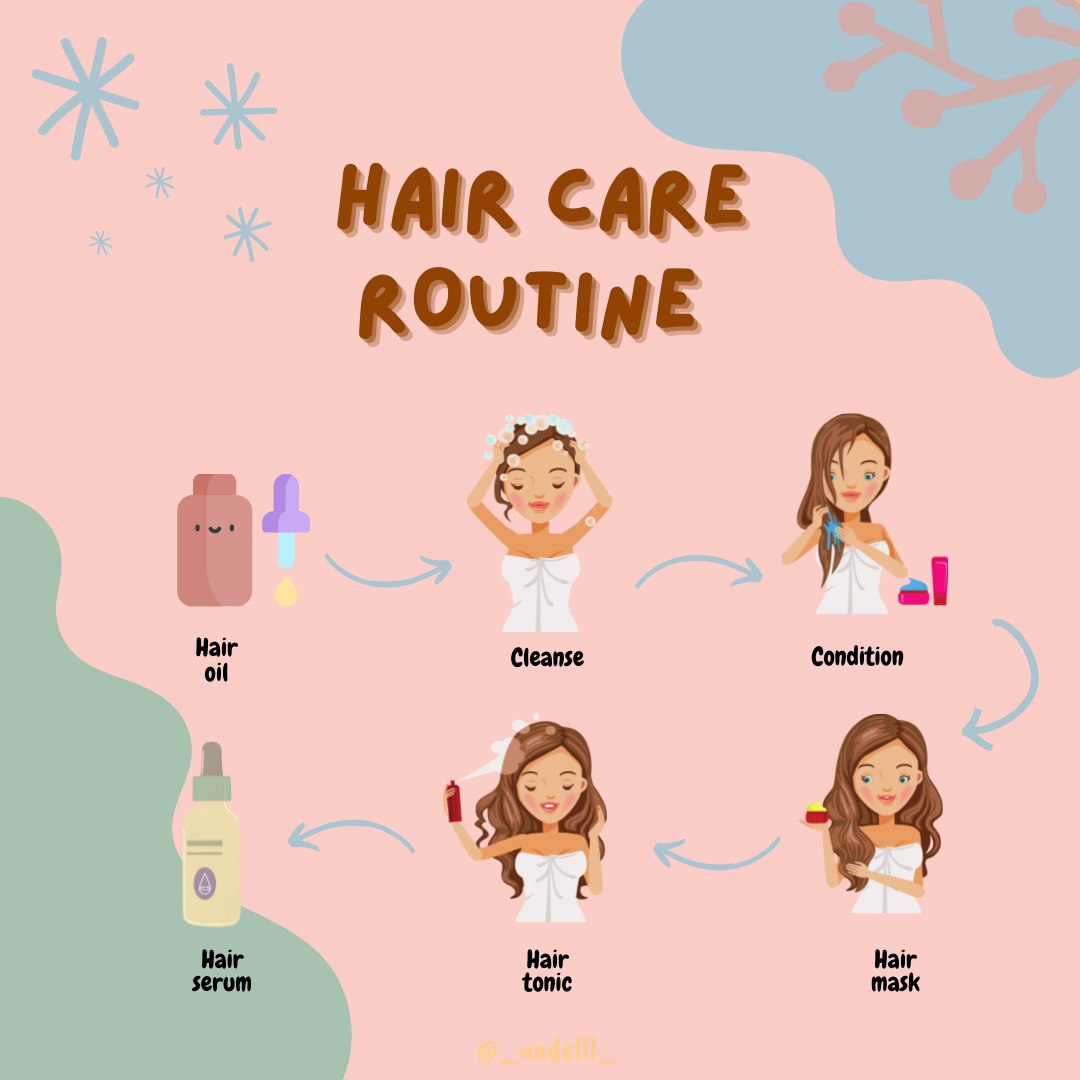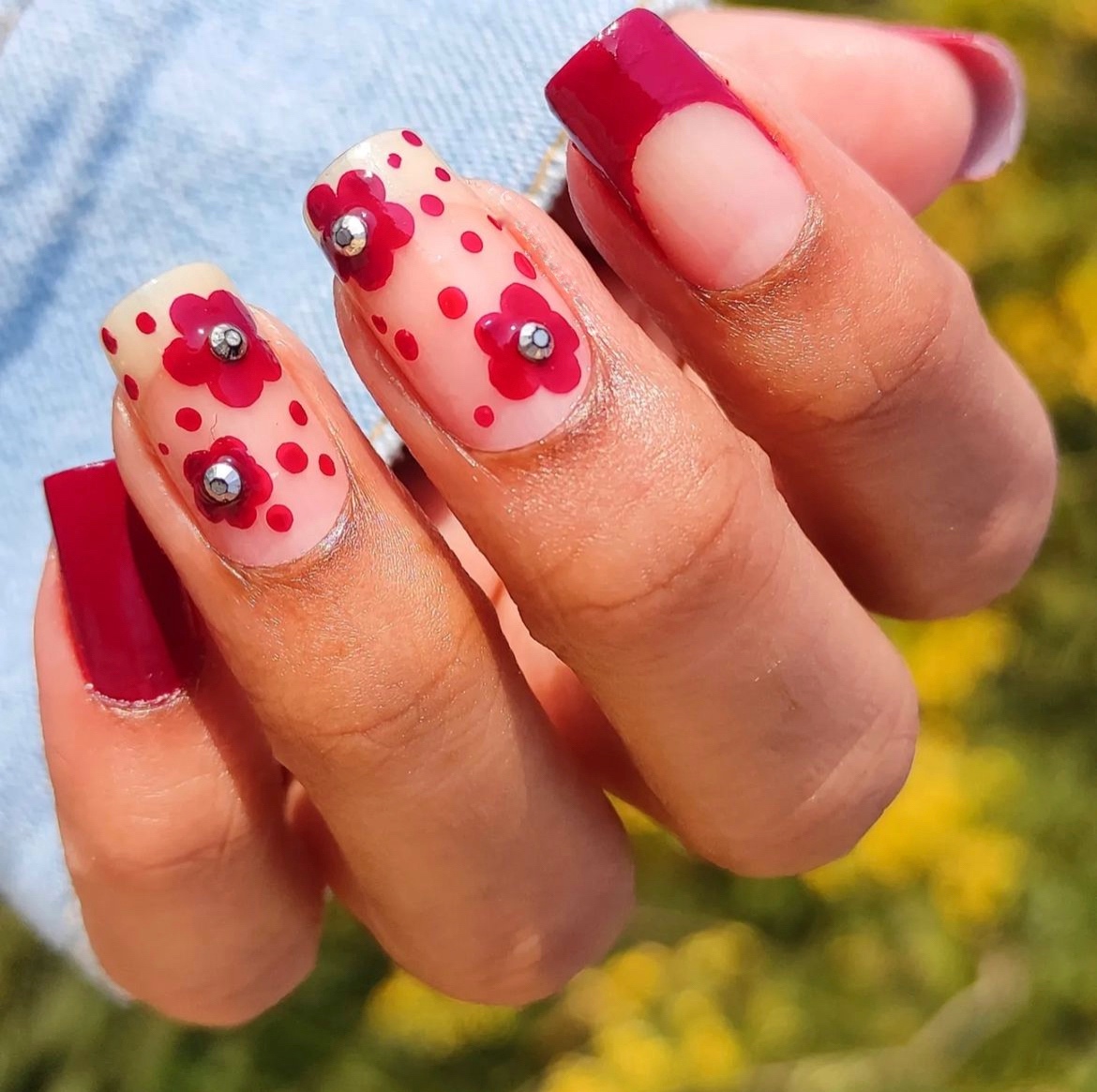

Hair . Aug 18, 2024
Hair Care Routines
Hair care routines involves breaking down the process into manageable steps that address various needs and hair types.
By Damyanti Salon
1. Understanding Hair Type and Needs
- Determine Hair Type: Identify whether your hair is straight, wavy, curly, or coily. This will influence the products and techniques you use.
- Assess Hair Texture: Understand if your hair is fine, medium, or coarse.
- Identify Concerns: Note any specific issues such as dryness, oiliness, damage, frizz, or scalp conditions.
2. Daily Hair Care Routine
Cleansing:
- Frequency: Wash your hair based on your hair type and lifestyle. For example, oily hair may need daily washing, while dry hair might benefit from washing less frequently.
- Shampoo Choice: Use a shampoo suited to your hair type and concerns. Sulfate-free shampoos are gentle and beneficial for most hair types.
- Technique: Gently massage the shampoo into your scalp to cleanse without causing damage.
Conditioning:
- Type: Choose a conditioner that matches your hair type. For example, moisturizing conditioners for dry hair, or lightweight conditioners for fine hair.
- Application: Apply conditioner mainly to the mid-lengths and ends of your hair to avoid weighing down the roots.
Detangling:
- Tools: Use a wide-tooth comb or a brush designed for your hair type. Avoid tugging to minimize breakage.
- Technique: Detangle your hair when it's damp and conditioned for the least amount of breakage.
3. Weekly or Bi-Weekly Treatments
Hair Masks:
- Purpose: Use deep conditioning masks to address specific needs like extra moisture or repair.
- Application: Apply the mask evenly to clean, damp hair and leave it on as per the product instructions.
Scalp Treatments:
- Exfoliation: Use a scalp scrub or exfoliating treatment to remove dead skin cells and excess oil.
- Treatments: Apply treatments for scalp issues, such as dandruff or dryness, as needed.
4. Monthly or Occasional Care
- Deep Conditioning: Incorporate a more intensive conditioning treatment monthly to maintain hair health.
- Professional Services:
- Trims: Schedule regular trims to prevent split ends and maintain the shape of your hairstyle.
- Color Touch-ups: For colored hair, schedule appointments to touch up roots or refresh the color.
5. Lifestyle and Dietary Considerations
- Diet: Eat a balanced diet rich in vitamins and minerals that support hair health, such as vitamins A, C, D, E, and biotin.
- Hydration: Drink plenty of water to keep your hair hydrated from the inside out.
- Stress Management: Practice stress-reducing activities as stress can impact hair health.
6. Product Recommendations
- Shampoos and Conditioners: Look for reputable brands and read reviews. Products from brands like Olaplex, SheaMoisture, and Kérastase are often recommended.
- Styling Products: Depending on your needs, consider volumizers, anti-frizz serums, and heat protectants.
- Tools: Invest in quality tools such as ceramic or tourmaline hair dryers and straighteners.
7. Common Mistakes to Avoid
- Over-Washing: Washing hair too frequently can strip it of natural oils.
- Excessive Heat Styling: Frequent use of heat tools can cause damage. Always use a heat protectant.
- Product Buildup: Using too many products can weigh hair down. Stick to essentials and clarify occasionally.
8. Customizing Your Routine
- Experiment: Tailor your routine based on how your hair responds to different products and techniques.
- Adjust as Needed: Adapt your routine according to seasonal changes, lifestyle adjustments, or changes in your hair’s condition.
Example Hair Care Routines:
For Dry, Curly Hair:
- Daily: Wash with a sulfate-free shampoo, condition with a moisturizing conditioner.
- Weekly: Apply a hydrating hair mask once a week.
- Occasional: Deep condition once a month and get a trim every 8-12 weeks.
For Oily, Straight Hair:
- Daily: Use a clarifying shampoo to manage oil, apply a lightweight conditioner.
- Weekly: Use a scalp treatment to control excess oil.
- Occasional: Use a deep-cleansing mask once a month, and get a trim every 6-8 weeks.
For Normal Hair:
- Daily: Wash with a mild shampoo and conditioner suited for your specific needs.
- Weekly: Apply a balanced hair mask or treatment.
- Occasional: Deep condition monthly and trim every 8-12 weeks.
Conclusion
Regularly reviewing and adjusting your hair care routine will help keep your hair looking its best. Remember, everyone’s hair is unique, so it’s important to find what works best for you through trial and error.



